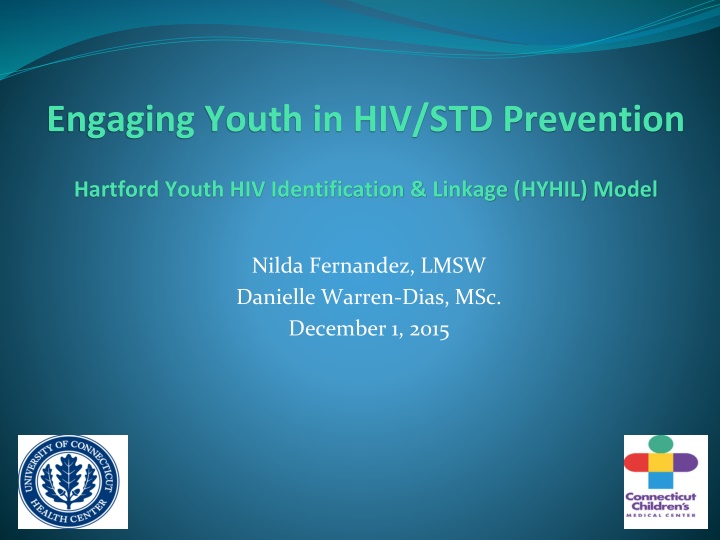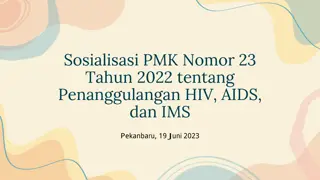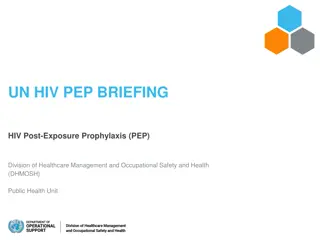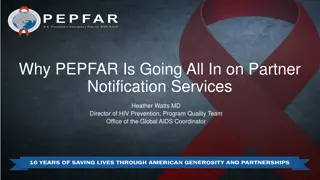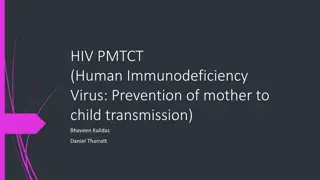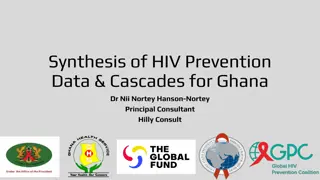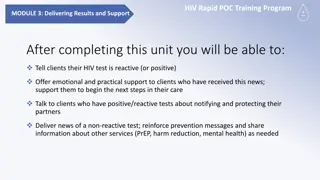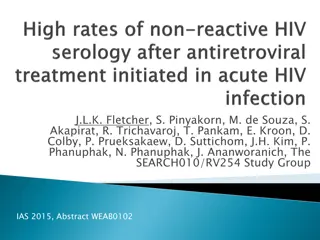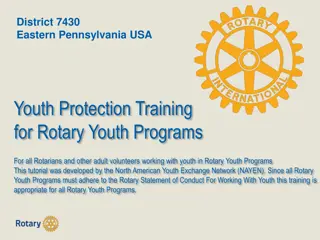Engaging Youth in HIV/STD Prevention
This presentation discusses the significance of scientist mobility between universities and industry in strengthening linkages between basic science and economic competitiveness. It explores research organization models, R&D careers, and challenges in optimizing innovation.
Download Presentation

Please find below an Image/Link to download the presentation.
The content on the website is provided AS IS for your information and personal use only. It may not be sold, licensed, or shared on other websites without obtaining consent from the author.If you encounter any issues during the download, it is possible that the publisher has removed the file from their server.
You are allowed to download the files provided on this website for personal or commercial use, subject to the condition that they are used lawfully. All files are the property of their respective owners.
The content on the website is provided AS IS for your information and personal use only. It may not be sold, licensed, or shared on other websites without obtaining consent from the author.
E N D
Presentation Transcript
Engaging Youth in HIV/STD Prevention Hartford Youth HIV Identification & Linkage (HYHIL) Model Nilda Fernandez, LMSW Danielle Warren-Dias, MSc. December 1, 2015
Office of Community Child Health Approach Vision Be a community resource and a national leader in addressing critical health needs and challenges of children on the local, regional, state, national and global levels Strengthening Programs - Evaluation tools - Access to resources Leveraging synergies across programs - Best practices -Promoting partnerships Have a strong record of developing, supporting, and spreading innovative programs Incubating new innovations
Hartford Youth HIV Identification & Linkage Consortia Mission To prevent the transmission of HIV and sexually transmitted infections (STIs) among youth through innovative outreach and preventive education, to enhance youth-focused HIV/STI screenings in collaboration with community agencies, to identify HIV/STI positive youth and link them into care, community resources and employment/career services.
History of HYHIL In 1999 Identified Needs: Collaboration Advocacy Improve health outcomes for youth affected HIV Disease Got out of AIDS in order to prevent AIDS Community engagement Convened roundtable discussions Secured seed funding Established the Hartford Youth HIV Identification & Linkage Consortium
Vulnerable Populations Served 10 million new yearly STD infections among 13-24 year olds which are surrogate markers for future HIV infections 2013 CT STD cases reported: Chlamydia 68% among 15-24 year olds Gonorrhea 49% among 10-24 year olds Syphilis 30% among 20-24 year olds There are 10,637 current cases of HIV in CT as of 2013 33% Black 32% Hispanic 28% of new HIV cases in 2013 were 20-29 year olds 6% of new HIV cases in 2013 were under 20 CT ranked 7th in AIDS cases Cost Effective - $16 Billion in health care costs/year 7 Information from: State of CT DPH and Center for Disease Control & Prevention
HYHIL Partners/Supporters AIDS Connecticut Capital Area Substance Abuse Council Central CT Area Health Education Center Charter Oak Health Center City of Hartford Health & Human Services Community Health Services of Hartford Community Renewal Team Connecticut Children s Medical Center Connecticut Department of Public Health CT Kids Counsel Connecticut Women s Education and Legal Fund Greater Hartford Ryan White Planning Council Latino Community Services Hartford Gay and Lesbian Health Collective Hispanic Health Council San Juan Center, Inc. Southside Institute Neighborhood Alliance The Mobile CPR Project (PENN Medicine) Trinity College UConn Health Center UConn School of Social Work
Health Interactive Project (HIP) Targeted Intervention to students in schools with School-based Health Centers Stop AIDS Mobile Theater Presentations 40,000 students received preventive education Health Screenings in school settings: ~3000~HIV tests ~3200~ STD tests 1 HIV Positive (MSM) 1 Positive HIV & Syphilis 1 newly diag. linked to Care 10% positivity rate for Chlamydia Seeing increase of GC
Core Elements 1) Collaboration Engage other stakeholders (youth, community, CBOs) Leveraging Resources/funding Innovative, Holistic approach to prevention 2) Outreach Raise awareness Prevent new transmissions Advocacy 3) Early Detection of HIV/STI Improved health outcomes for youth
Core Elements 4) Linkage to Care and Community Resources Medical Case Management, Mental Heath Employment, Education 5) Structural Components: Lead Agency Sustainability (Creative Strategies for Funding) Blending administrative resources among collaborators
Collaboration is Key Alone we can do so little; together we can do so much, Helen Keller Images Courtesy of Clara Acosta Glynn, LCSW and CCMC Corporate Communications
Diffusion of the HYHIL Model 5 Core Elements are adaptable Technical Assistance Collaboration drives Innovation Social Impact Vulnerable Groups Business success based on collaboration - Coordinate efforts across public health and health care system is beyond disease siloes. Julie Scofield, Executive Director, NASTAD
Process of Diffusion Local Dissemination: Ryan White Care Act- Parts A, B, D & Planning Consortium Connecticut Dissemination: CT HIV/AIDS Identification & Referral Task Force New England HIV Implementation Science Network 2nd Annual Symposium National Reach: The White House s Office of National AIDS Policy - National Women & Girls HIV/AIDS Awareness Day International Reach : XIV International AIDS Conference, Barcelona, Spain 2002 International Association for Social Workers in Group Symposium 2015 OMICS 3rdInternational HIV, STD, STI Conference 14
Challenges and Success Challenges: Coordination Lead Agency Successes: Pooling Resources Effective Advocacy Getting Buy-in from stakeholders Effective: Reached over 40,000 youth Overcoming Territorial Shared Best Practices Ahead of our time Evidence Informed Approach of Prevention Advocacy Sustainability
Purpose of the Consortia: Go beyond AIDS to prevent AIDS Collaboration Pooling of Resources Social Impact Getting to Zero AIDS Free Generation
Resources http://store.samhsa.gov/shin/content/SMA14-4884/SMA14-4884.pdf www.Womenshealth.gov www.WomensLaw.org www.hhs.gov/ash/oah www.plannedparenthood.org www.NASTAD.org www.Hartford.gov National Resource Center on Domestic Violence www.nrcdv.org
Thank you! Gracias! Follow HYHIL @ connecticutchildrens.org FB: GetTested/HYHIL Twitter: HYHIL
